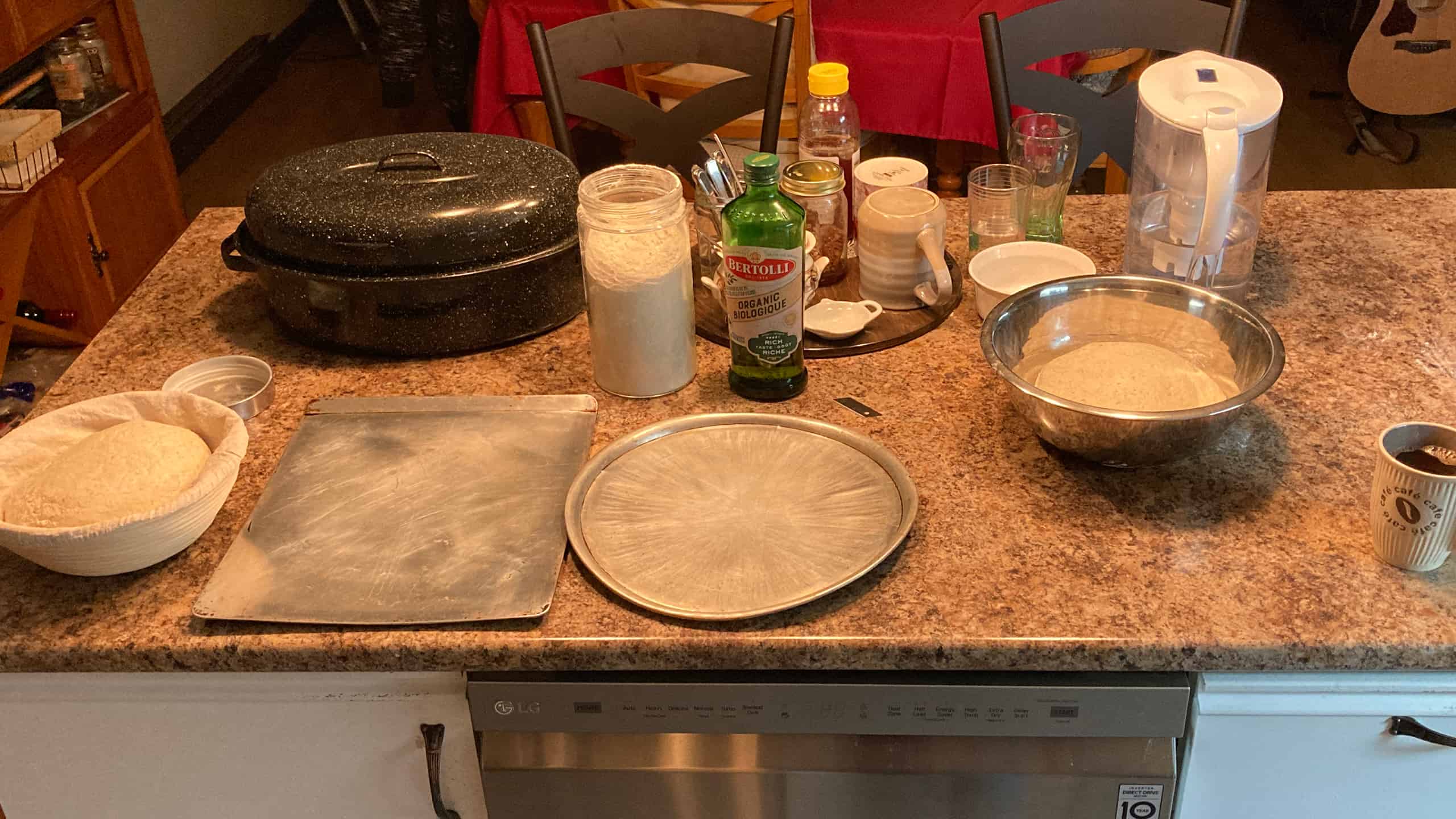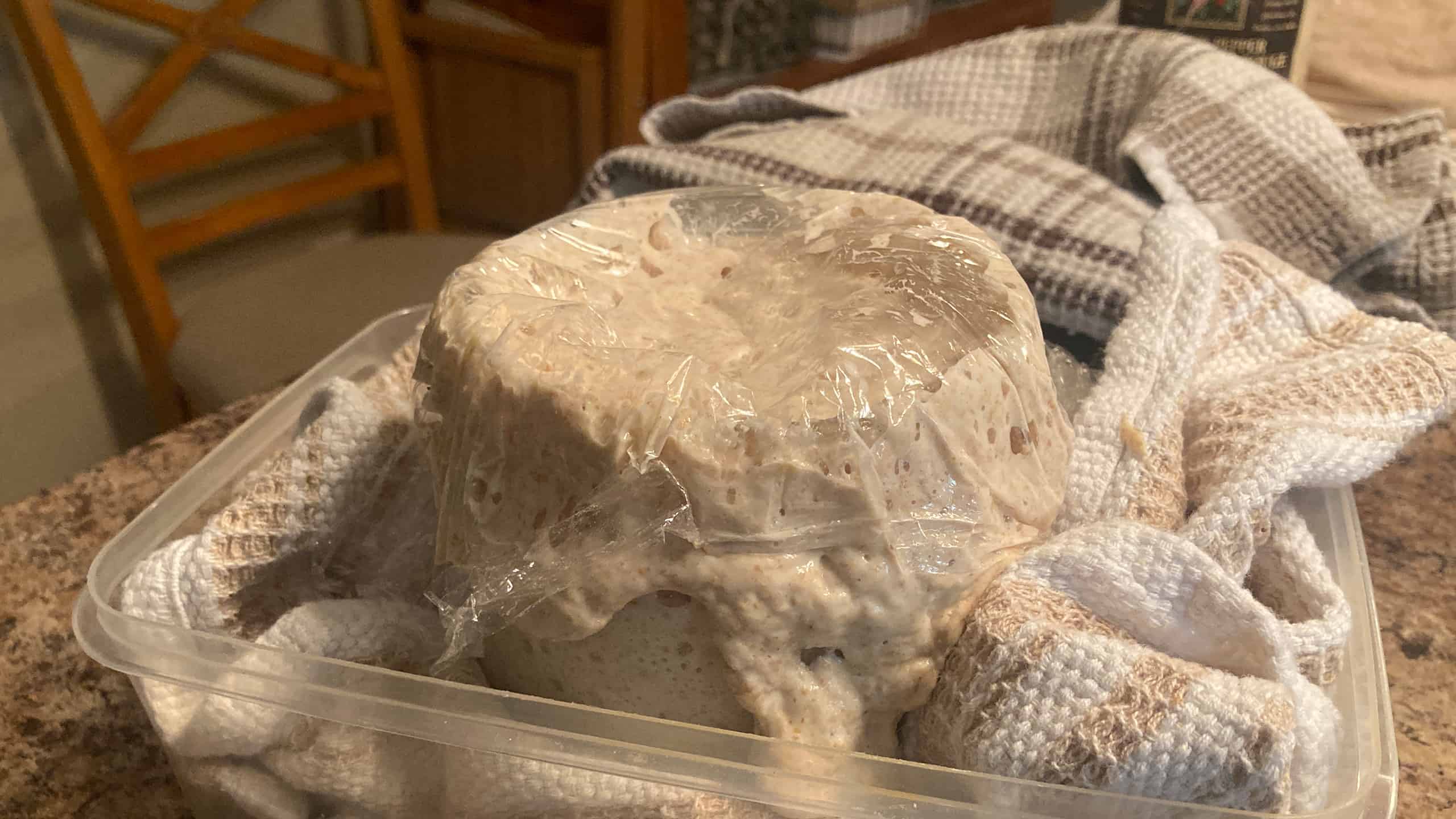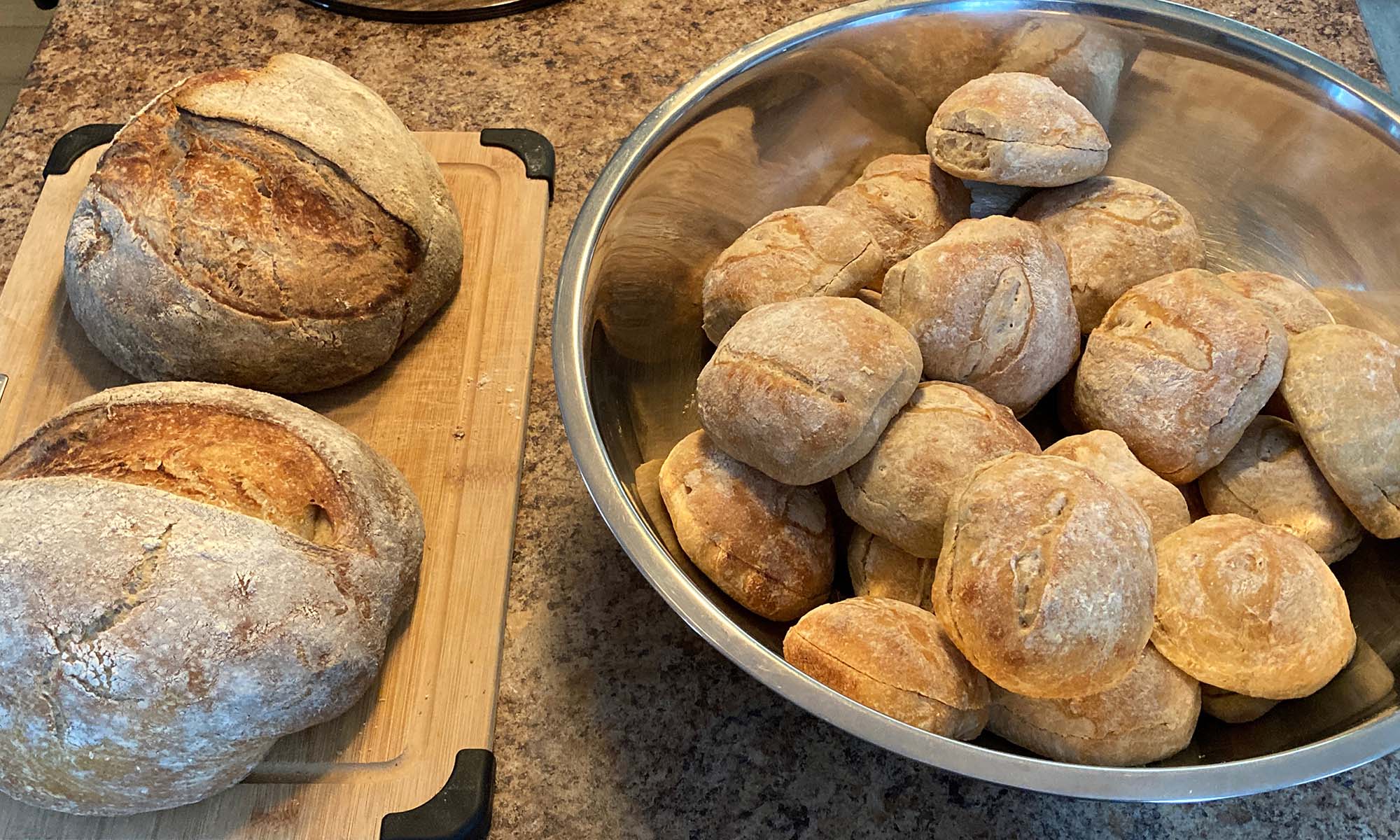Initially drafted in February 2023. I delayed publishing for initial uncertainty of discoveries made regarding our “open bake” process. After thorough testing and many more loaves, I’m now confident in the content of this article and happy to have it published.

From the end of November 2022 to the middle of January 2023, my cousin and I would go from a mere five loaves to fifty-five loaves of sourdough bread, plus some goodies! Starting sourdough, I remember what kind of struggle it was to sort through the myriad of information online. Not that sourdough is overly complex, but there’s a generous amount of people publishing content who all seem to have differing methods. Examining the sourdough scene as a whole is quite funny. Making good sourdough is straightforward, but some folks treat it as if they were building a Boeing 747. The interesting folks of the internet can seriously science-up every part of this bread-making process. Geeking out knows no bounds here; you’ll find people monitoring and experimenting with each aspect of their starter and bread. People go nuts and transform their home kitchens into high-tech laboratories. I often wonder if I’m listening to a scientist or a baker; maybe a combination? Alas, at least the opportunity exists to push your bread to new heights if that’s your shtick. Even at my novice level, I often lose the uninitiated in conversation. Will I proceed to sound more like a babbling scientist or will I be able to simplify my sourdough message?
Culture & Flavour

It took us weeks before deciding on a name for our starter. After working with it and making some loaves from it, we were inclined to supply it with a female name. It seemed to us that we ought to find something reminiscent of a loving, kind, and generous grandma. We agreed to give her the old-fashioned name “Gertrude” (pronounced “ger-chured”). Our first loaves were, basically, garbage bread. It took a little more than fifteen loaves for us to be producing good, consistent results. If we waited till our starter was ready, this number would be lower. I am glad I had the chance to learn sourdough with someone else. We challenged each other’s process and the new information we were finding on the interwebs. We also were able to pick up the slack for one another when we were down, which fortunately didn’t happen at the same time. The funny part is that, though two, we still managed to neglect our starter on a handful of various days, making it quite hungry by the next feeding. Kinda smells like alcohol at that point, but not the appealing kind. Good thing Gertrude was (and is) tough, resilient, and hard to kill. I am no longer staying in Québec, so time will tell if Gertrude has a long and prosperous life in the home where she came to be.

Early in our bread-making days, we found that plain white flour was not nearly tasty or exciting enough to use in our loaves on its own. The first easy solution to this was to be adding whole-wheat flour. Which, by the way, helped our starter immensely. Bleached white flour does not contribute very well to a healthy, fully cultured starter. You can use it to get by for some time, but ultimately, your starter will appreciate course flours much more. Our first 100% whole-wheat loaf turned out differently than we expected. It rose satisfactorily well during its fermentation period. It was also edible in the sense that it wasn’t repulsive to eat. Toasting seemed to draw out more of its flavour, preferable to some and not to others. I have no plans (at this point) to make more 100% whole-wheat loaves of bread.
Burning Crusts

Can you make good sourdough and cheap out on bakewear? Constantly burning our bread would push us to find a cost-friendly solution. The discovery we made was the tremendously versatile use of tin foil. Some artisan influencers will tout the supremacy of thick stone slabs or the greatest dutch ovens. Some don’t need either because of their steam injection ovens. The problem? Each thing is expensive, bulky, and not necessarily needed for anything more than bread. We were not having much success putting trays of water or ice in the oven to replicate steam injection. Our bread continued to burn. So, without money (or maybe the willingness to spend any), and without any donor dutch ovens, we were determined to make our inexpensive pizza pans work. Finally as an experiment one day, we tossed our dough onto the pan, slathered it in oil and flour, hacked it like Fruit Ninja, then we tented it in tin foil. We placed the shiny side facing up to repel the direct heat, and et voilà! This trick made a huge difference! Our bread went from burning in the first ten minutes to being light in colour the whole way through. To get a darker loaf, we just removed the foil for the last 10-20 minutes of the bake. We have recalled this trick many times and have wondered why this is not mentioned in more places. It’s a cheap and viable solution. Too bad more people don’t know about it.

We also gained a little experience with two different styles of ovens. The primary kind had a hidden element. Allowing our bread not to receive direct heat on the bottom of the pan. When we baked in a traditional electric oven with an exposed element, the bottom crust burned. These exposed elements produce too much direct heat for thin pans to mitigate, inserting foil underneath the bake pan prevents the bottom crust from burning. Just remember to keep the shiny side facing down!

We have made many loaves using this tin foil trick now. It has resolved all burning issues. It is my personal go-to method for baking bread. Because the bake is not done in a closed dutch oven (but instead on an open pan) I call it an “open bake.” I’ve made successful loaves this way on round stone pizza pans, round metal pizza pans, and cast iron pans too.


Leave a Reply